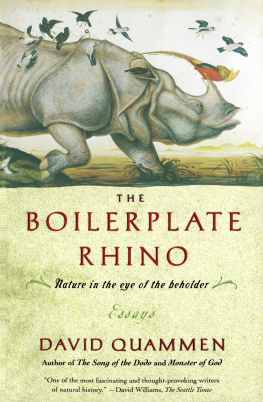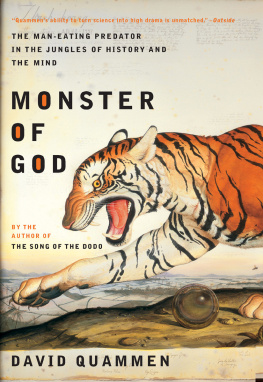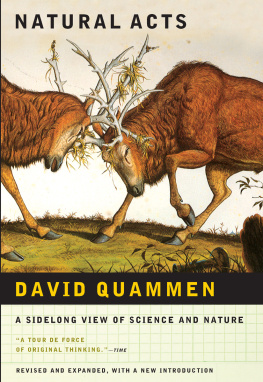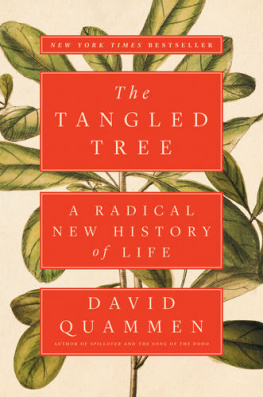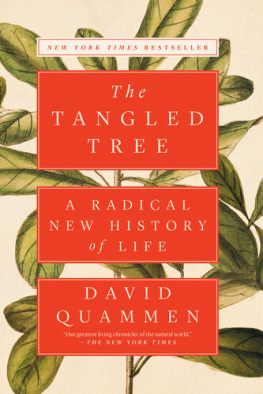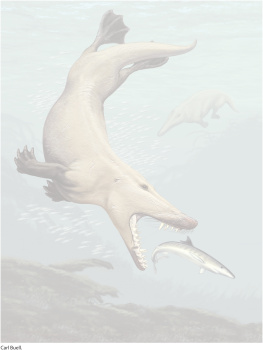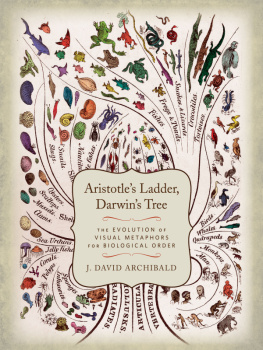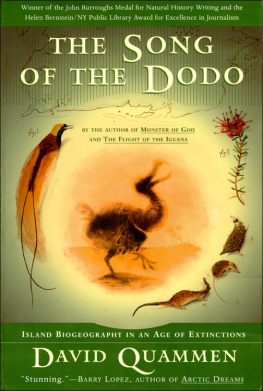Thank you for downloading this Simon & Schuster ebook.
Get a FREE ebook when you join our mailing list. Plus, get updates on new releases, deals, recommended reads, and more from Simon & Schuster. Click below to sign up and see terms and conditions.
CLICK HERE TO SIGN UP
Already a subscriber? Provide your email again so we can register this ebook and send you more of what you like to read. You will continue to receive exclusive offers in your inbox.
We hope you enjoyed reading this Simon & Schuster ebook.
Get a FREE ebook when you join our mailing list. Plus, get updates on new releases, deals, recommended reads, and more from Simon & Schuster. Click below to sign up and see terms and conditions.
CLICK HERE TO SIGN UP
Already a subscriber? Provide your email again so we can register this ebook and send you more of what you like to read. You will continue to receive exclusive offers in your inbox.
ALSO BY DAVID QUAMMEN
NONFICTION
Yellowstone
The Chimp and the River
Ebola
Spillover
The Reluctant Mr. Darwin
Monster of God
The Song of the Dodo
ESSAYS
Natural Acts
The Boilerplate Rhino
Wild Thoughts from Wild Places
The Flight of the Iguana
FICTION
Blood Line
The Soul of Viktor Tronko
The Zolta Configuration
To Walk the Line

Simon & Schuster Paperbacks
A Imprint of Simon & Schuster, Inc.
1230 Avenue of the Americas
New York, NY 10020
www.SimonandSchuster.com
Copyright 2018 by David Quammen
All rights reserved, including the right to reproduce this book or portions thereof in any form whatsoever. For information, address Simon & Schuster Subsidiary Rights Department, 1230 Avenue of the Americas, New York, NY 10020.
FirstThis Simon & Schuster hardcoverpaperback export edition August 2018
SIMON & SCHUSTER PAPERBACKS and colophon are registered trademarks of Simon & Schuster, Inc.
For information about special discounts for bulk purchases, please contact Simon & Schuster Special Sales at 1-866-506-1949 or .
The Simon & Schuster Speakers Bureau can bring authors to your live event. For more information or to book an event, contact the Simon & Schuster Speakers Bureau at 1-866-248-3049 or visit our website at www.simonspeakers.com.
Interior design by Lewelin Polanco
Jacket design by Lauren Peters-Coll Aer
Jacket image: background by Krasovski Dmitri / Shut Terstock; Plant by Dea / G.Dagli Orti / De Agostini / Getty Images
Library of Congress Cataloging-in-Publication Data
Names: Quammen, David, 1948- author. Title: The tangled tree : a radical new history of life / David Quammen. Description: First Simon & Schuster hardcover edition. | New York : Simon & Schuster, 2018. | Includes bibliographical references and index. Identifiers: LCCN 2018004356| ISBN 9781476776620 | ISBN 1476776628 | ISBN 9781476776644 (ebook) Subjects: LCSH: Phylogeny--Molecular aspects. Classification: LCC QH367.5 .Q36 2018 | DDC 591.3/8--dc23 LC record available at https://lccn.loc.gov/2018004356
ISBN 978-1-4767-7662-0978-1-9821-0720-8
ISBN 978-1-4767-7664-4 (ebook)
To Dennis Hutchinson and David Roe, my attorneys of the soul
Contents
THREE SURPRISES

An Introduction
L ife in the universe, as far as we know, and no matter how vividly we may imagine otherwise, is a peculiar phenomenon confined to planet Earth. Theres plenty of speculation and probabilistic noodling, but zero evidence, to the contrary. The mathematical odds and chemical circumstances do seem to suggest that life should exist elsewhere. But the reality of such alternate life, if any, is so far unavailable for inspection. Its a guess, whereas earthly life is fact. Some astounding discovery of extraterrestrial beings, announced tomorrow, or next year, or long after your time and mine, may disprove this impression of Earths uniqueness. For now, though, its what we have: life is a story that has unfolded here only, on a relatively small sphere of rock in an inconspicuous corner of one middling galaxy. Its a story that, to the best of our knowledge, has occurred just once.
The shape of this story, in its broad outlines as well as its finer details, is therefore a matter of some interest.
What happened, over the course of roughly four billion years, to bring life from its primordial origins into the fluorescence of diversity and complexity we see now? How did it happen? By what concatenation of accident and determination did it yield creatures so wondrous as humansand blue whales, and tyrannosaurs, and giant sequoias? We know there have been crucial transitions in evolutionary history, improbable incidents of convergence, dead ends, mass extinctions, big events, and little ones with big consequencesincluding some fateful contingencies that have left behind evidence of their occurrence embedded subtly throughout the fossil record and the living world. Alter those few contingencies, as a thought experiment, and everything would be different. We wouldnt exist. Animals and plants wouldnt exist. Why did it happen as it did, and not some other way? Religions have their responses to such questions, but for science, the answers must be discovered and then supported with empirical evidence, not received in a holy trance.
This book is about a new method of telling that story, a new method of deducing it, and certain unexpected insights that have flowed from the new method. The method has a name: molecular phylogenetics. Wrinkle your nose at that fancy phrase, if you will, and Ill wrinkle with you, but, in fact, what it means is fairly simple: reading the deep history of life and the patterns of relatedness from the sequence of constituent units in certain long molecules, as those molecules exist today within living creatures. The molecules mainly in question are DNA, RNA, and a few select proteins. The constituent units are nucleotide bases and amino acidsmore definition of those to come. The unexpected insights have fundamentally reshaped what we think we know about lifes history and the functional parts of living beings, including ourselves. In particular, there have come three big surprises about who we arewe multicellular animals, more particularly we humansand what we are, and how life on our planet has evolved.
One of those three surprises involves an anomalous form of creature, a whole category of life, previously unsuspected and now known as the archaea. (Their name gets uppercased when used as a formal taxonomic category: Archaea.) Another is a mode of hereditary change that was also unsuspected, now called horizontal gene transfer. The third is a revelation, or anyway a strong likelihood, about our own deepest ancestry. We ourselveswe humansprobably come from creatures that, as recently as forty years ago, were unknown to exist.
The discovery and identification of the archaea, which had long been mistaken for subgroups of bacteria, revealed that present-day life at the microbial scale is very different from what science had previously depicted, and that the early history of life was very different too. The recognition of horizontal gene transfer (HGT, in the alphabet soup of the experts) as a widespread phenomenon has overturned the traditional certitude that genes flow only vertically, from parents to offspring, and cant be traded sideways across species boundaries. The latest news on archaea is that all animals, all plants, all fungi, and all other complex creatures composed of cells bearing DNA within nucleithat list includes ushave descended from these odd, ancient microbes. Maybe. Its a little like learning, with a jolt, that your great-great-great-grandfather came not from Lithuania but from Mars.
Next page

